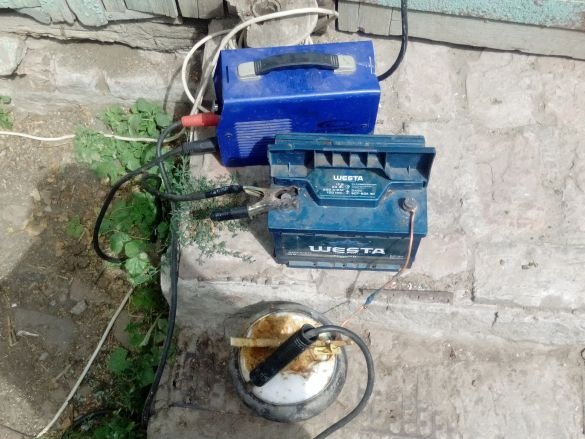The inverter voltage is 50V at idle, the voltage is constant. Judging by the sparks of 2-3 A., the current is approximately by eye. The more salt and the closer the electrodes, the higher the current.
Charges vigorously, wound up after 40 minutes after a complete discharge (even tidy bulbs did not burn). Now I'm doing a full charge.


